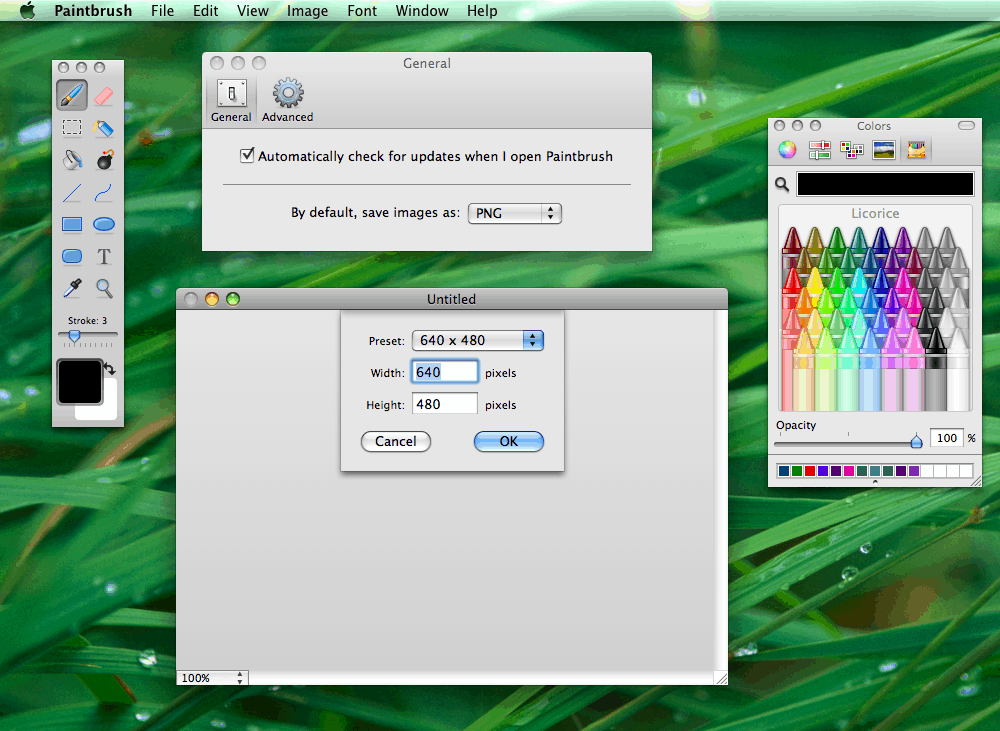

App store paint for mac mac#
The emergence of the Mac App Store is going to bring with it something like labor pains. He has also written about it on Omni Group's company weblog.
App store paint for mac upgrade#
Omni Group's Ken Case mentioned on Twitter today that Omni Group will continue to sell its apps through its website for the foreseeable future, because it can "offer more flexible terms and options: upgrade pricing, bundle and volume discounts, and access to beta releases" and personal educational discounts. Fortunately Pixelmator is now only US$30 instead of $60, so even existing customers can consider $30 a reasonable "upgrade" fee - or continue to use version 1, which doesn't expire! The drawbacks include no way to offer upgrade pricing to existing customers.

The benefit to developers is not having to deal with billing and bandwidth charges. Customers who choose to keep using version 1 can do so, but all future versions will be on the Mac App Store. For example, Pixelmator version 2.0 will be exclusively available on the Mac App Store.
I expect that what will happen is when the next major version of an app is released, most relatively inexpensive apps will move to be "Mac App Store-only" so that the developer doesn't have to manage two different versions of the app (one for Apple's store and one for their website). Many developers will continue to release apps both through their own websites and through the Mac App Store. That does not necessarily mean that you have to buy the app again. It's a different app with a different license.
App store paint for mac update#
It's also worth pointing people to the "single serving site" of the day, called, which seeks to answer the question that Mac developers across the globe have been hearing all day: "If I bought your app already, can I update it through the Mac App Store?" Spoiler alert: No. The folks at Panic and Barebones have written very good posts about this, as have the folks over at Macworld, so check them out if you're still unclear about how this works. For that, you will have to continue to check for updates using the app's built-in mechanisms, or check the developer's website. The problem is that the Mac App Store also recognizes apps that you have purchased outside of the Mac App Store if the version of the app matches the Mac App Store version exactly, using something called the "Bundle ID." For example, if you noticed that the Mac App Store showed iPhoto as "Installed," even though you bought it through the boxed iLife set, but the Mac App Store did not notice that you already have Pages installed, it may be because you haven't installed the latest iWork update.Īs you might expect, this has led to quite a bit of confusion, so it bears repeating: if you have not purchased an app through the Mac App Store, you cannot re-download it or get any future updates through the Mac App Store. Here's a quick overview of how the Mac App Store works, in case you haven't tried it: 1) you search for an app, 2) when you find an app you want, you click on the button showing "Free" or "Buy" with the price listed, 3) the button changes to "Installing" while the the app is downloaded to your Applications folder and 4) the button changes to "Installed" when the app is fully installed. It was well-intentioned, but poorly executed, and it ends up being an "attractive nuisance," meaning that it's something that you're really better off ignoring: third-party apps not purchased via the Mac App Store may appear as "Installed" there, leading to unrealistic expectations of what you can do with Apple's latest service. Apple just released the Mac App Store, and with it came one very unfortunate feature.


 0 kommentar(er)
0 kommentar(er)
